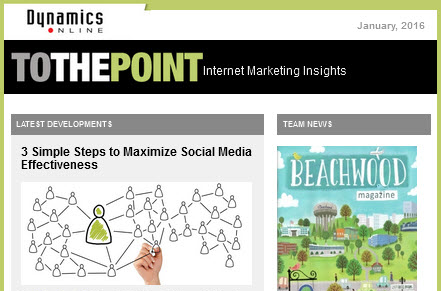Understanding Pay-Per-Click Campaigns – Part One
Greetings! I am delighted to be writing my first post as the newest member of the Dynamics Online team. As the Internet Marketing Strategist, my job is two-fold: 1) successfully plan, implement, and track Pay Per Click (PPC) online advertising campaigns and 2) maintain email marketing campaigns for our wide range of clients.
As you may have been able to guess by the title, in this series we’re going to focus on the first part of my job description here at Dynamics: PPC advertising campaigns.
Evolution Toward PPC Advertising
So what exactly is a PPC campaign? Like Peter Jackson before me, I’m going to break this seemingly simple topic into three parts. At the end of the series, you’ll understand how a PPC campaign typically works, what it can do for the client, why it’s important to have one, the steps that go into maintaining one, and perhaps most importantly, how to decipher the lingo. So let’s shift our focus from impressions and CTR towards CPC and view-through conversions! (See what I mean about the lingo?)
While the world of creating online ads may sound intimidating, it’s still very much rooted in the traditional and comfortable world of physical advertising that’s been commonplace for years. In fact, one could argue that search engine advertising has perfected the art of marketing in ways never before imaginable (but don’t tell that to Don Draper).
Before the Internet, you had several advertising options – print, radio, television, and outdoor. While this gave you a wide range of choices and potential audiences, they all suffered from the same limitations:
- You didn’t know who saw them
- You didn’t know whether or not people were engaged by them
- They ran for a predetermined about of time whether they were increasing sales or not
Essentially, it was a shot in the dark.
Then along comes the Internet, what with its keywords and metrics and clicks. Oh, the clicks. Beyond suddenly giving marketers a global audience, search engine advertising also miraculously solved the three aforementioned problems with traditional ad campaigns: they were targeted, measurable, and active.
Targeted
You can decide when the ads show up based on what keywords someone uses to search. In this way, your ads are only shown to those to whom they are most relevant.
Measurable
Using a powerful interface such as Google AdWords or Bing Ads (more on those later), you can measure the success of your campaign bases on dozens of different metrics. Most stats show up in real time, so you can tweak your campaign as it goes to reach the optimal settings based on your preset goals.
Active
Your ads are smart; if no one is searching for them, they won’t show up. If you notice this when reviewing your metrics, you can pause or delete a campaign so you’re not wasting your time or your money.
Google AdWords
For our purposes in this series, I will only be talking about Google AdWords, as Google not-surprisingly commands 80% of the world’s search traffic. That’s an ideal audience if I’ve ever heard one. However, you should know that there is also Bing Ads (formerly Microsoft adCenter), which creates ads for both the Bing and Yahoo! networks. (Did you know they run on the same network?) While they command only 28.7% of the world’s search traffic, it’s important to note that many of those searching on the network fall into a demographic of people that use the Internet mainly for purchases and service seeking, so it’s a market you don’t want to ignore.
I hope you’re excited to embark upon this fascinating and potentially profitable new world. In the next installment, I’ll do a basic walk-through of Google AdWords campaign creation, as well as define some of that tricky jargon.
Until next time, happy optimizing.
 Anthony Mahramus is the Internet Marketing Strategist at Dynamics Online.
Anthony Mahramus is the Internet Marketing Strategist at Dynamics Online.
You can reach him by calling (216) 292-4410.



